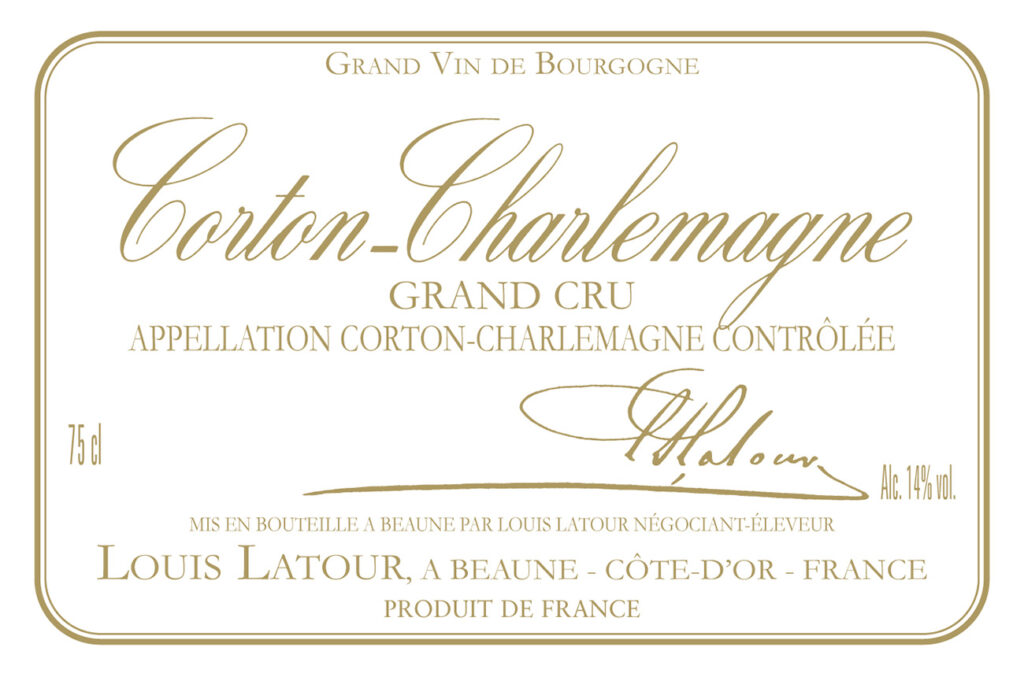
Corton-Charlemagne, one of the world’s greatest white wines, needs a decade to blossom fully and to show why it deserves its grand cru status. And then, like a great red wine, the best vintages from a top producer remain at their peak, on a plateau, for decades.
With their almost 10.9 hectares of vines, at an average age of roughly 30 years, Louis Latour is not only the largest owner in Corton-Charlemagne (Bonneau du Martray is second with about 9.7ha), they are also a master with this grand cru.
I have come to these conclusions from extensive tastings over the years including a recently-conducted 30-plus vintage vertical spanning the years 1978-2018 and regular sampling from my cellar.
I have also attended annual tastings for more than 20 years during which the late Samuel Seidman, Latour’s importer for New England, presented the previous 25 vintages of Latour’s Corton Charlemagne.
These annual tastings allowed an assessment of how an individual vintage changed and evolved year after year and showed how vintages, such as 1979, 1989 and 1999 reached, and remained on, a high plateau for a decade and more.
Geography
The roughly 72.8ha Corton-Charlemagne appellation is composed of nine lieux-dits spread over three communes; Aloxe-Corton, Pernand-Vergelesses and Ladoix-Serrigny on the hill of Corton.
The lieux-dits form a J-shaped band running on the east just under the forest (Le Corton, Les Renardes, Basses Mourottes, Hautes Mourottes and the upper part of Le Rognet et Corton) to the south-facing Les Languettes, Les Pougets, and Le Charlemagne, and to the southwest (En Charlemagne).
Producers, and others more knowledgeable about geology than I, tell me that these lieux-dits, sitting high on the hill, have a higher content of limestone in the soil, making them especially well-suited to Chardonnay.
A small amount of Chardonnay is planted outside of these lieux-dits and bottled under the Corton appellation, but these rarely achieve the finesse and complexity of Corton-Charlemagne. That said, Domaine Parent makes an exceptional one.
About 90% of Latour’s parcels are located contiguously in the south-facing lieux-dits along with two smaller pieces in Le Corton and Les Renardes. Latour’s steely style ideally balances the ripeness imparted by the vines’ southern exposure.
From Aligoté to Chardonnay
Ironically, phylloxera was likely responsible for Chardonnay’s presence here. Prior to infestation with that aphid, Aligoté was widely planted.
In the late 19th century, after the devastation caused by phylloxera, the seventh-generation Louis Latour started the re-planting of their vines with Chardonnay. His signature still adorns their label.
Since Corton-Charlemagne is the largest of the grand cru vineyards, for both red and white, in the Côte d’Or, the wines are easier to find and are the least expensive of the white grand crus.
But, as with Clos de Vougeot, there are scores of producers bottling Corton-Charlemagne and, like Clos de Vougeot, the quality of the wines is highly variable, which makes it all the more important to remember the key to Burgundy: producer, producer, producer. In my mind, Latour ranks among the best.
Style
Latour’s Corton-Charlemagne are always tightly wound when young, showing a balance of spice, melon-like fruit and minerality.
In their youth, perhaps the first five or so years, the pepper-like spice and mineral aspect predominates. These youthful ones inevitably open and express themselves better a couple or even several nights after opening.
With bottle age, melon-like or spiced pineapple flavours appear. At all ages, the steely backbone of acidity for which Latour’s whites are known provides energy and support.
As the wines mature, they develop a luxurious and captivating richness.
At their peak, wines from the very best vintages, such as 1979, 1989 and 1999 remain on a plateau for decades, showing the complexity of maturity while maintaining freshness.
My preference for most vintages is to drink them no sooner than 10 years of age.

Top vintages
My experience with these wines over the years show the beauty of this appellation.
All these wines showed well at earlier stages in their lives. Some, such as the 1983, 1991, 2000 and 2001, while still rated today in the low 90s on a 100-point scale, are not in the same league as the very best.
There were a few, the 1987, 1992, 1994 and 1998, that are now well past their prime.
But strikingly, even in weaker vintages, Latour’s Corton-Charlemagne shows the value of a top terroir and a dedicated producer. Despite the general repute of 1980, 1984 and 1993 for whites, wines from these vintages have developed beautifully and gracefully and remain a joy to drink today.
Food pairings
As any New England-based wine lover can tell you, Latour’s Corton-Charlemagne is an ideal match for steamed or boiled lobster. Keeping with the theme of rich wine and rich food, other excellent matches are sautéed scallops or chicken in a mushroom cream sauce.
But a good argument could be made for matching the power and density of these wines with a garlicky shrimp scampi or for enjoying their splendid complexity contrasted with a simply broiled sea bass.
As with all great white wines, these Corton-Charlemagne should be served chilled, but not cold, so as not to blunt their layers of subtle charm. And surprisingly, even many of the older wines benefited from 30-minutes or so of aeration in the glass.
